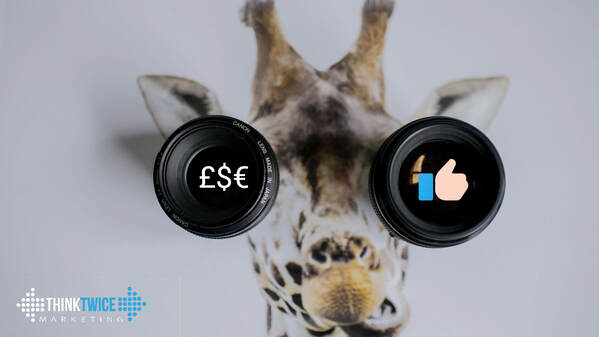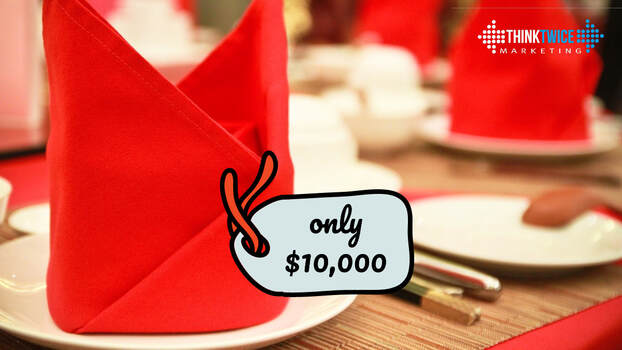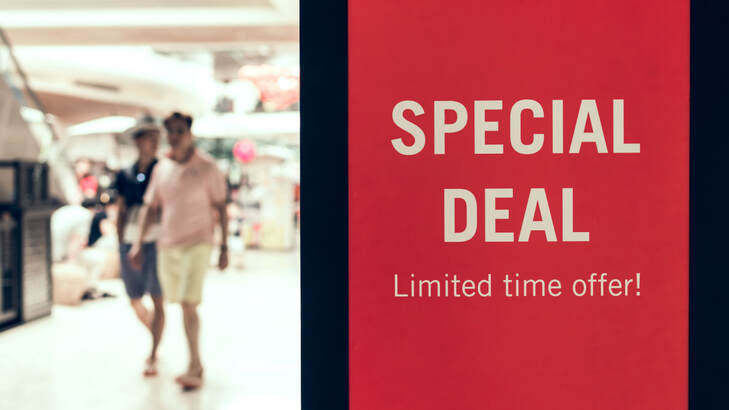|
I’ve written a lot about pricing in my book Psychology in Marketing and Sales, as well as in previous blog posts and I’m often surprised when I hear small business owners (especially startups) ask how they can possibly charge for something when other people are offering similar services for free. A recent example of this is when a customer of mine pointed out that his competitor is charging £25 for a webinar. “How can they do that”, I was asked, “when everyone is currently doing similar webinars for free?”... and from what we could see, the competitor is successfully selling these webinars. The reason for the success comes down to what I like to refer to as the ‘Offer’ - the way that the product or service is positioned including the key message, the benefits and who is being targeted. As well as the way the offer is positioned, the price itself can have a big impact on perception. Without knowing anything about jewellery, for example, a customer might assume that the higher-priced necklace or earring is better quality. The webinar or training course that has a higher price tag could be assumed to provide more valuable content. Is it about pricing or perception?The purpose of this blog post isn’t to give you specific actions or strategies for your business when it comes to product positioning and pricing.
The aim is to provide you with content to reflect on, and to help you think about how you can position your products better - and that’s why I’d like to share the following examples I came across recently (by the way, if you would like to have a review of your pricing strategy or how you position your offer then I provide a 90-minute one on one session that could make a huge difference to your business. Click here to find out more). The apple story I have come across this from multiple sources, and while I don’t know if it’s a true story, it’s still great to read… An old man was selling apples. His price list reads: 1 apple = $3.00 3 apples = $10.00 A young man stopped and bought 3 apples individually - paying $3 for each. As the young man was walking away he turned and said “Hey old man, do you realise I just bought 3 apples for $9, instead of $10? Maybe business is not your thing?” The old man smiled and mumbled to himself “people are funny. Every time they buy 3 apples instead of 1, yet they keep trying to teach me how to do business.” Comparing Apple, not apples On the subject of apples, The iPhone (ok so a different type of Apple!) has been very successful over the years with a much higher price than many of its competitors. We could get into an in-depth comparison on how good the iPhone has been over the years compared to other phones but, despite some phones being arguably better, having more features and being cheaper, they have not sold as well as the iPhone. Why? Because Apple products have strong desirability. The brand has been built up over the years and the ‘Offer’ has been created and positioned in a way to make the iPhone a MUST HAVE product. What’s your OFFER? When it comes to selling and marketing your products and services, it’s not just about the price, or about the features. It’s about many elements that need to come together as a complete package. Success depends on creating the right offer and then communicating it effectively to the right audience. The right offer consists of having the right product, with the right features and benefits at the right price, and that also needs to be communicated to the right target audience. That’s a lot of ‘rights’ but you get the idea. If you need help with positioning your offer correctly and making it a success, let’s have a chat to see how I can help. Get in touch today. I have just finished reading ‘The Subtle Art of Not Giving A F*ck’ by Mark Manson (which if you would like an alternative perspective on life, I recommend reading). In the book, Mark talks about the Picasso napkin story which was new to me. If you haven’t heard it, the story goes something like this…
Picasso used to draw or doodle on his napkins when at a cafe and one day, he was asked by a woman if she could have the napkin to keep. She offered to pay whatever the napkin with his drawing was worth, to which Picasso responded that it would be $10,000. Slightly taken aback by the high valuation, the woman pointed out that it had only taken 30 seconds to create the artwork. Picasso promptly folded the napkin away into his pocket and responded ‘no, it has taken me 40 years to do that’. Depending on what website you visit the story varies slightly, and whether it was dollars, pounds or another currency, it was a considerable amount of money. There is, however, a good argument for not basing the price on how long the drawing took. When it comes to selling your services, do you quote an hourly rate depending on how long it takes to do a task? Do you price your products on the value to the customer? Or how many years of experience it has taken to learn the skills you have acquired so that you can deliver what you do… and so quickly? When talking to customers, and in my book Psychology in Marketing and Sales, I discuss different ways to price products to get the right results. A web designer, for example, might be able to create a website in one day and charge a daily rate - but if the customer does it themself, it might take days or even weeks. Added to this, a DIY website might not look as good, It might not function as well and it will most likely not convert web visitors into paying customers as effectively (resulting in lost sales in the long term). Similarly, a training instructor, coach, consultant or security business (just to name a few specialities!) can make a huge difference to anyone’s life or business, but only because of the skills they have developed over the years. And the prices they charge should reflect this. It’s true that you need to consider other factors when setting pricing such as what the competition is doing, how much competition there is and who your target audience is, but creating pricing based on ‘cost plus margin’ or an hourly rate could mean you are losing out considerable amounts of money. Sometimes it can take years of practice and experience in order to be able to continually create masterpieces in a very short time. That experience has a value. What’s your napkin worth, and what are you charging for it? Consumer behaviour is a tricky thing to understand but then so are the simple mistakes that businesses often make with their pricing.
Last year, I visited a food retailer (who will remain unnamed) that had snacks at £2.20 for one box or £2.00 for two (you may need to read that again, it isn't a typo!). Surely, the price was wrong? If you have read my blog post on What is Decoy Pricing you may believe it's a very clever strategy to make the purchase of 2 or more boxes so irresistible that the consumer will buy them. After all, the theory of Decoy pricing suggests that the consumer stops comparing 'shall I buy the snacks or not' and switches to 'shall I buy 1 or 2 boxes'. The main doubt I had was that this retailer had often advertised offers such as '25% off' on the shelves but the checkout systems didn't reflect the discount so it could be a foolish pricing error. Recently, I came across another pricing situation that's slightly different. A different retailer was offering a meal deal for £3 consisting of any sandwich, drink and side. It was just before 1 pm and all that was left of the sandwiches were the heavily discounted 'must be eaten today'. 'This got me thinking: Had people stopped buying the meal deal because they didn't see the value in it with discounted sandwiches? Although the discounted sandwiches + drink (and possibly a side) were in some cases cheaper than the meal deal, why are they still remaining? It seems that the idea of one price for everything is so simple and attractive that we prefer to go with that option. Who wants to stand there calculating the price individually nowadays or be lazy but take the risk of buying a discounted sandwich and still end up paying more than the bundled deal? The bundled deal solution is much more attractive when we are talking a few pennies or pounds. In conclusion, I believe the first retailer was using decoy pricing while the bundled offerings of the second retailer made sense - although if they want to sell off food that expires very soon then a different pricing strategy for these items should be considered. What are your thoughts?  Decoy pricing is a very clever way to make a different product offering more attractive by offering an inferior or decoy price. The term 'decoy pricing' was widely written about by Dan Ariely after he discovered Decoy pricing being used by the Economist magazine. He consequently undertook research which proved that Decoy pricing worked. Here's an example of Decoy Pricing being used: Online learning courses: $65 Printed learning materials: $130 Online access and printed learning materials: $130 In this example, the printed learning materials (middle option) is the decoy price. It makes no sense when you can have online access as well for the same price. Without this decoy price, there are two options and most people are likely to order the online learning courses but when the decoy price is introduced there is a significant shift and more people buy the Online access and printed learning materials instead. The decoy pricing acts to move the human mind away from comparing the lower priced option and instead to compare the two options at $130 - therefore deciding to purchase the last option with access to both printed and online learning materials. |
written byThe opinions in these blog posts are those of marketing expert and book author Darren Hignett. Categories
All
Archives
October 2022
|
|
Open 9 am - 5 pm
Tel: 07769 331 247 |




 RSS Feed
RSS Feed